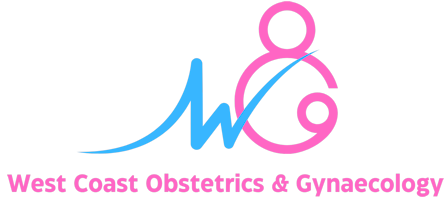AFTER YOUR CAESAREAN SECTION:
We strongly encourage you to be up and moving around the day after your caesarean section. However, it’s crucial to wait until the effects of the medication given during your caesarean have worn off, ensuring you have full sensation and movement in your legs. The midwives in the postnatal ward will guide you when they believe you are ready to start moving.
Even though your mobility will be limited at first, getting up, walking and moving will assist your body in returning back to normal quicker and prevent post-surgery complications; for example, not mobilising and staying in bed too long can slow down blood flow and bowel function which can lead to constipation. You may be given medications like stool softeners in the form of a drink to relieve constipation. Eating foods that are high in fibre, drinking plenty of water and mobilising as soon as possible will also help.
You will have a urinary catheter, which will stay until the next day. We will check if you are passing urine as usual. In certain situations, we may have to re-insert the catheter temporarily if we think your bladder is not emptying urine completely.
You are more prone to clots after having a baby, and having a caesarean is an even more significant risk of this happening. You may be given daily injections, asked to wear surgical leg stockings and encouraged to walk to stop this being a problem.
WHEN YOU GO HOME:
Many women are worried about pain; however, generally speaking, regular simple pain relievers (paracetamol and an anti-inflammatory) and an occasional stronger pain killer (as needed) are all that is required in the first couple of weeks after birth. You can lift your baby and do normal light tasks but should avoid heavy lifting for 4-6 weeks to allow your abdominal wall to heal properly and reduce the chance of a hernia.
CARING FOR YOUR WOUND AFTER CAESAREAN SECTION:
Most women will have skin stitches that are dissolvable.
The midwife will attend your home between day five and day ten. They will remove your dressing and check your wound.
The following are the things you can do to help reduce the risk of wound infection:
- Always wash your hands before and after touching your wound or dressing
- Showering is preferable to bathing
- Do not rub soap, shower gels, or talc directly onto the wound
- Pat the wound dry with a clean towel. You can also use a hair dryer on a cold setting to dry up all the moisture around the wound area
- Wear loose-fitting underwear and clothing to prevent rubbing on the wound
RETURNING TO NORMAL ACTIVITIES:
You may resume your usual activities at home when you feel ready to do so. There are no time restrictions, as everyone is different; however, remember that you have had a major abdominal operation and should need adequate time to rest. You should not undertake heavy tasks such as lifting anything heavier than your baby, vacuuming, standing to iron for long periods, or heavy housework until 6 weeks after your caesarean. It is advised that you gradually increase your level of activity after this.
SEXUAL INTERCOURSE:
You can resume sexual intimacy at any point; there is no right time. However, some women wait until their wounds are healed and the blood loss stops. You must always use contraceptives if you do not want to have another baby quickly, as you can conceive any time after the birth, even if breastfeeding.
DRIVING:
It is a common misconception that women who have a caesarean birth cannot drive for six weeks. This is safety advice, but many women are physically safe to drive before this time. It is recommended that you take someone with you the first time you drive so that if you are uncomfortable, then someone can take over. Also, please make sure you are able to safely and comfortably perform emergency braking and/or stopping.
If unsure, you can check with your GP or contact our rooms.
REMINDER:
Consider a pram/stroller in your lifting restrictions when you are out and about!
SYMPTOMS TO REPORT:
Please contact Dr Doohan’s rooms, St Mary’s Ward or GP as soon as possible if you experience any of the following:
- Feeling unwell
- Feeling hot and feverish
- Pain that is new or becoming worse
- Signs of a wound infection: redness, swelling or oozing from the wound

